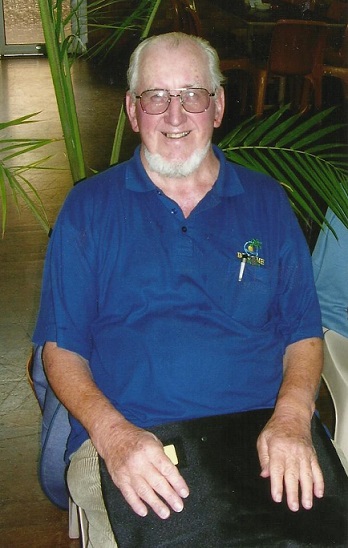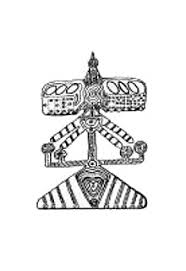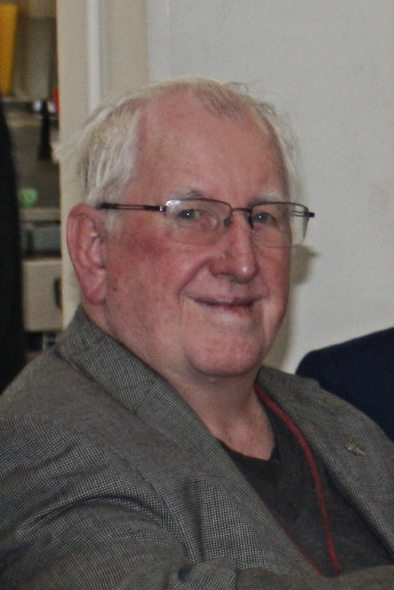Celebrating Martin Wilson, MSC, 90 years of age on July 8th, 65 years a priest, missionary and academic.
Leo Wearden MSC
I have been asked to write some words about Martin Wilson on the occasion of reaching this milestone of 65 years since his ordination as a priest.
Martin, though a priest, is also a social anthropologist and has written up the story of going to do fieldwork at Peppimenarti in the NT as something of an undercover priest. His thought was that he would be better able to observe the social structures of the community if he went there as a social anthropologist rather than as a priest. He was finishing a private Mass one day in the caravan when some young girls took issue with this and when he asked them if they would like him to say Mass for them, they answered: Yes, we are Catholic aren’t we! After that he said a Mass each day and that became a central event for the community.
Congratulations to Martin! I would like to take this opportunity to thank him for his friendship and for the part that he has played in my life with his interest and encouragement in my work in PNG and in remote Aboriginal communities in Australia.
This began more than 40 years ago when Martin was appointed to teach metaphysics at the YTU in Box Hill. Martin had a doctorate in philosophy from the Gregorian in Rome and had recently completed a Masters in Anthropology from the University of PNG while teaching philosophy at the seminary at Bomana.

Martin in 2004
Metaphysics with its abstract categories and esoteric language presented its challenges to a 20year old seminarian who had come from a dairy farm in northern Victoria. However, it was during that course that Martin introduced us to TS Eliot’s poetry; the words from the Four Quartets have remained with me since.
“We shall not cease from exploration
And the end of all our exploring
Will be to arrive where we started
And know the place for the first time”.
These were times of exploration for me. A few years later and still at the YTU Martin offered a social anthropology course on Australian Aboriginal Society. It was a new course and I considered myself fortunate to be able to take it.
It was the era of the call for Aboriginal self-determination and of the advances in missiology and the theology of the Church in its engagement with different cultures. Around the same time Martin had attended the ordination of Patrick Dodson, the first Aboriginal priest, in Broome who was a student with us at the seminary at this time. Martin highly respected the insights that Patrick brought and looked forward to working with him.
By way of preparation for the course at the YTU Martin had facilitated a review of MSC missionary work in the NT. He had then spent some months living alone in a caravan at Peppimenarti in the Daly area. Peppimenarti was in its beginnings as a new movement of Aboriginal peoples in the NT who were leaving the larger mission communities and returning to their homelands
.I was deeply impressed with his accounts of the places both in PNG and in Northern Australia that he had visited and the ceremonies and experiences that he described.
Martin lectured on kinship, marriage arrangements, ritual and the richness of the religious life of Aboriginal society. He introduced us to the writings of the anthropologists and scholars of Aboriginal society. One of these was Dr. W.E.H. Stanner, a renowned anthropologist, who had a long association with the Murrinhpatha of Port Keats and had written of the ceremonies and their underlying values. An important theme taken up by Martin was Stanner’s expressed surprise that most Christian missionaries to the Aborigines had not recognized the richness of the religious life and outlook of Australian Aborigines.
He wrestled further with the implications of these insights in a booklet printed in 1979 and titled Old, New and Timeless some pointers towards an Aboriginal Theology.
During the Kulama ceremony at Bathurst Island and in these days with the Wadeye people who still gather with more than a thousand people for their initiation ceremonies, I find myself going back to Stanner and some of the other writings and revisiting some of the issues Martin raised as he considered the deeper issues at play and what it is that God’s spirit is calling us to now in our relationship with the first peoples of these lands.
As well as lecturing at the YTU, Martin set about the establishment of the Nelen Yubu Missiological Centre at Daly River. Its aim, as set out on the cover, of its publications was to mediate between anthropology and similar disciplines on the one hand and the richness of Aboriginal culture on the other with the emergence of a church both truly Aboriginal and truly Christian.

Nelen Yubu or ‘the good way’ as it translates still goes before us and there continue to be debates about how well we are traveling this road.
However, for just on 24years Martin and his secretary Keren Calvert persisted in publishing the periodical Nelen Yubu. This was a truly remarkable effort and a wonderful resource for anyone ministering today in Aboriginal communities. I would insist it be required reading for anyone who today is preparing to engage in this ministry.
The variety of articles written by many who have spent a life time walking the good way with Aboriginal people is a precious record of the issues that were being tackled from 1978 to 2002. The number of different people from around the country who contributed to this venture is remarkable. Women and men, Catholic and not Catholic, wrote on a vast array of issues related to this ministry. Of particular significance and a source of hope was the number of Aboriginal writers who also contributed.
In the later years of my studies before ordination I would meet with Martin in his office for brewed coffee and the occasional drop of whiskey. As important as it was for me to chew over the ideas and issues confronting the church’s missionary work in the NT and PNG, I found myself sometimes seeking spiritual guidance also as I confronted the various ups and downs in formation. Martin was a good listener.
I was able to steady the ship with advice sometimes given from his own insights and experiences and his familiarity with literature, philosophy and the writings of the spiritual classics and given in a friendly and congenial setting.
Our friendship has continued. I was always warmly welcomed if we met on my leave from PNG. He was familiar with the languages Tok Pisin, Hiri Motu and the places where I was working and the French and PNG MSC confreres with whom I was working.
Since beginning work in the NT in 1993 Martin has visited me both at Bathurst Island and then again at Wadeye. On Bathurst Island he gave me lessons over several beautiful dry season afternoons in fishing and how to catch the elusive barramundi.
On a visit to Wadeye I was pleased to accompany him to Peppimenarti to meet with the people and to hear him reminisce about his experiences and dreams at that time. Some years later and in spite of the ban on visits by Church personnel he was able to make an arrangement with the elders to stay there for a few weeks.
Martin has continued to show an interest in my work amongst the Aboriginal communities in the NT. At more than one Province Chapter he has spoken of the importance of continuing our presence among the Aboriginal people of the NT.
There are fewer pickups at the airport these days but he continues to always make himself available to me on my trips to Sydney and I enjoy the opportunity to share something of the life and developments in our ministry here and to receive his reflections.

